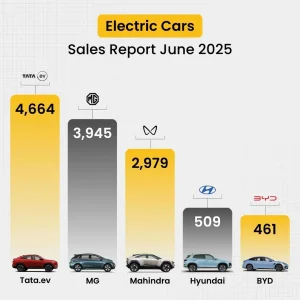China's 3D-printed mini jet engine triumphs in pioneering flight test
(
Xinhua) 14:58, July 03, 2025
BEIJING, July 3 (Xinhua) -- China successfully completed the maiden flight of a domestically developed ultra-lightweight miniature jet engine, which was entirely manufactured using 3D printing technology.
This achievement marks a breakthrough in advanced propulsion design and manufacturing, according to the engine's developer.
The flight test took place on Tuesday in north China's Inner Mongolia Autonomous Region, reaching a maximum altitude of 4,000 meters. It comprehensively demonstrated the operational reliability and stability of the engine under authentic flight conditions, Aero Engine Corporation of China(AECC)said in a press release on Wednesday night.
View attachment 42193
The engine represents China's first-ever flight-validated turbojet engine in the 160-kilogram thrust class to be manufactured entirely using multi-disciplinary topology optimization additive manufacturing (3D printing) techniques, said AECC.
"This successful inaugural flight lays a more solid technical foundation for the research and development of future advanced aviation engines in China," it said.
The core innovation lies in the revolutionary integration of advanced design methodologies with 3D printing capabilities, filling a crucial domestic gap in the full-engine engineering application of this specific technology direction, AECC noted.
View attachment 42194
The research team pioneered the application of multi-disciplinary topology optimization specifically tailored for 3D printing. This approach, coupled with integrated component design, allowed for a dramatic reduction in overall engine weight and a significant enhancement in critical performance metrics, the corporation said.
Prior to the flight, the engine had already undergone and passed rigorous ground-based verification testing to ensure that performance meets all targets and the validated service life is sufficient, it said.
3D printers for aircraft manufacturing
ITP Aero successfully certifies a turbine and jet engine mounting part manufactured using additive technology
ITP Aero consigue certificar una pieza de sujeción de un motor tanto de turbina como de reacción fabricada con tecnología aditiva

elpais.com
old technology Spain can do it in jet engines that power Airbus and Boeing Aircraft
The distance between Cincinnati and Querétaro is not measured in kilometers but in innovation for General Electric (GE). In these two regions, the firm is working on one of the most promising projects for manufacturing industrial parts such as aircraft turbines using 3D printing technology.
I
n the US city, GE develops the technology, and in the Bajío region, nearly 1,800 Mexican engineers fine-tune and assemble it in their laboratories for testing and prototypes.
Vladimiro De la Mora, CEO of GE, tells
Forbes Mexico
about the company's two 3D printers in Querétaro, which it uses to manufacture future aircraft turbines.
Read also
General Electric announces the departure of its CEO, Jeff Immelt
He explains that with the help of nearly 2,000 engineers at its Engineering Center, they will be able to implement these innovations in aircraft in approximately two years and sell them to leading aerospace companies such as Airbus and Bombardier.
“In Querétaro, we have two 3D printers for making prototypes. One aspect of the business we are currently developing at GE is the digital 3D printing of production parts. Our aviation turbines already have 3D-printed parts,” explains the executive.
General Electric produces these prototypes internally, but the idea is to have these machines and materials available on the market for any company within a couple of years.
“We have 1,800 Mexican engineers developing components and assemblies for our aviation industry. Of these, 350 develop software applications, analytics, and the modeling that can predict and connect them to machines,” he explains.
Predix, GE's crown jewel
The company's plans to drive these innovations are technically anchored in Predix, the true jewel in General Electric's crown.
It's the core platform, the technological core where it has poured all its knowledge of the Internet of Things and, with the help of its engineers, provides feedback and updates.
Predix is a global cloud platform designed for developers to create and deploy Internet of Things (IoT) applications. GE uses Amazon Web Services and may use Microsoft Azure in the future to host the core Predix platform.
"It is driving digital industrial businesses. By connecting industrial equipment, analyzing data, and providing real-time insights, Predix-based applications are unlocking new levels of performance for both GE and non-GE assets," the company explains.
In 2016, the aerospace industry exported $7.164 billion. In 10 years, Mexico went from tenth to sixth place among exporting countries for the US aerospace industry. According to the Mexican Aerospace Industry Federation (FEMIA), exports of approximately $8 billion are expected for 2017.
Given this, Vladimiro De la Mora sees a difficult year ahead, but remains hopeful for the sector.
"As you can see, there is some uncertainty throughout Central America, but we see opportunities for growth, and we are working to realize all of these opportunities in our Latin American markets. We expect to achieve double-digit growth
in 2017," he says.
En una especie de corredor tecnológico Cincinatti-Querétaro, la firma ya realiza pruebas piloto de lo que será el futuro de la aviación en dos años.

forbes.com.mx
World first 3D-printed jet engines created by Australian engineers
Published 26 February 2015, 11:04 AM GMT
Two entire metal jet engines have been 3D-printed by Monash University, each taking a month to produce

www.ibtimes.co.uk








